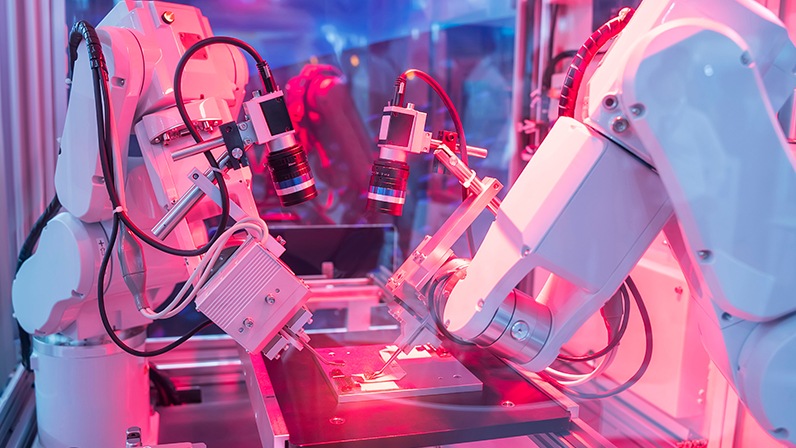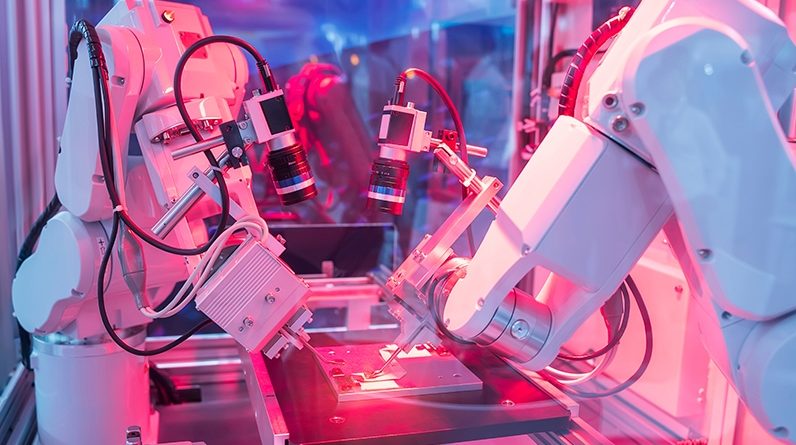Impact of AI Optimization on Organizational HPC Computing?
High-performance computing (HPC) has turned into a crucial apparatus across different businesses, driving advancement, examination, and critical thinking at an extraordinary speed.
As interest in computational power keeps on taking off, companies are confronted with the test of enhancing their HPC computing to guarantee efficiency, unwavering quality, and cost viability.
The rising role of Artificial Intelligence (AI) in automating HPC resource portions, workload planning, and performance observation has emerged as a groundbreaking power.
This article investigates the advantageous connection between AI and HPC, revealing insight into how AI-powered optimization is upsetting how companies deal with their high-performance computing environments.

The Convergence of AI and HPC
The convergence of AI and HPC addresses a change in outlook in computational capacities. HPC, typically associated with complex reenactments and huge-scope data handling, presently uses AI to upgrade its efficiency and viability.
Artificial intelligence (AI) computations, particularly machine learning (ML) and deep learning, have demonstrated remarkable capabilities in optimizing various aspects of HPC infrastructure services, ultimately leading to significant gains in efficiency and cost savings.
Revolutionary Impact of AI-powered Optimization in Organizational HPC Environments
The integration of Artificial Intelligence (AI) into HPC environments has introduced another type of optimization, changing how companies deal with their computing resources. These seven key points illustrate how AI-powered optimization can have a revolutionary effect on organizational HPC environments.
-
Dynamic Workload Management
One of the critical commitments of AI-powered optimization in HPC environments is the capacity to oversee workloads dynamically. Traditionally, companies confronted difficulties in distributing resources proficiently, frequently coming about in underutilized or overburdened frameworks.
AI calculations investigate verifiable data, user conduct, and framework performance to foresee workload designs. This predictive capacity considers proactive resource assignment, guaranteeing ideal utilization, and decreasing margin time.
Therefore, your company experiences enhanced performance and cost-viability in dealing with their HPC foundation.
-
Energy Efficiency and Sustainability
AI-powered optimization acquaints a sustainable aspect with HPC environments by tending to energy utilization challenges. HPC computing frameworks are infamous for their energy-intensive activities.
AI calculations can monitor and change framework boundaries continuously to improve energy use without compromising performance.
Through dynamic power management and astute booking, you can altogether decrease your carbon footprint and working expenses, adjusting HPC environments to worldwide sustainability objectives.
-
Automated Performance Tuning
Accomplishing maximized operation in HPC computing frequently requires many-sided tuning of framework boundaries. Typically, this cycle included manual changes and experimentation techniques, consuming important time and resources.
AI-powered optimization automates the performance-tuning process by consistently investigating framework behavior and making continuous changes.
This speeds up the optimization cycle as well as guarantees that HPC frameworks work at their greatest potential, conveying predominant computational abilities for logical examination, reenactments, and data investigation.
-
Troubleshooting and Predictive Maintenance
Maintaining the dependability of the HPC framework is critical for continuous tasks. AI-powered optimization integrates predictive examination to recognize expected faults before they grow into basic issues.
By breaking down verifiable data and observing framework wellbeing progressively, AI calculations can distinguish peculiarities and anticipate likely failures.
This empowers companies to plan proactive maintenance, limiting margin time and diminishing the risk of horrendous framework failures.
At last, this predictive methodology upgrades the general strength and unwavering quality of HPC environments.
-
Optimized Resource Utilization
AI-driven optimization ensures that computational resources are used wisely, eliminating errors and reducing unnecessary usage.
HPC frameworks can dynamically allocate resources based on the urgency and significance of tasks through astute workload distribution and prioritization.
This not only improves the overall performance of the framework but also allows organizations to achieve cost savings by avoiding unnecessary investments in extra equipment.
The result is a leaner, more capable HPC framework that aligns with organizational goals and budget constraints.
-
Enhanced Scalability
Scalability is an important factor in the viability of HPC environments, especially as organizations experience increased computational demands.
AI-powered optimization achieves consistent scalability by intelligently distributing workloads across multiple hubs and groups. This dynamic scaling ensures that HPC frameworks can handle increased computational loads without sacrificing performance.
As a result, organizations can adapt to changing demands, such as an unexpected surge in data handling requirements or the need for additional computational power for complex reenactments.
-
User-Centric Performance Customization
AI-powered optimization not only spotlights the specialized parts of HPC environments but also considers the user experience.
By dissecting user conduct, inclinations, and application prerequisites, AI calculations can modify the performance of HPC frameworks to meet explicit user needs.
This user-centric methodology improves the general convenience of the framework, permitting analysts, researchers, and specialists to get to the computing power they need without superfluous intricacies.
This tailored performance optimization encourages a more cooperative and useful climate inside associations using HPC resources.
-
Data-Driven Decision-Making
AI-powered optimization in high-performance computing empowers organizations to make informed decisions through real-time data analysis. Continuously monitoring and analyzing performance metrics, user behavior, and system health, AI algorithms generate valuable insights.
These insights enable organizations to identify patterns, trends, and potential areas for improvement. With a data-driven approach, decision-makers can optimize workflows, allocate resources efficiently, and strategically plan for future infrastructure upgrades. This fusion of AI and data analytics fosters a proactive decision-making environment, enhancing the overall effectiveness and agility of high-performance computing environments.
-
Adaptive Security Measures
Security is paramount in high-performance computing environments, handling sensitive data. AI-driven optimization enhances security by dynamically adapting to emerging threats. Advanced threat detection algorithms and anomaly analysis enable real-time identification of potential breaches.
Moreover, AI algorithms dynamically adjust security protocols and encryption methods in response to the evolving threat landscape. This adaptive approach ensures a proactive defense, fortifying the resilience of high-performance computing systems against the ever-changing cybersecurity challenges, providing a robust shield for critical data.

